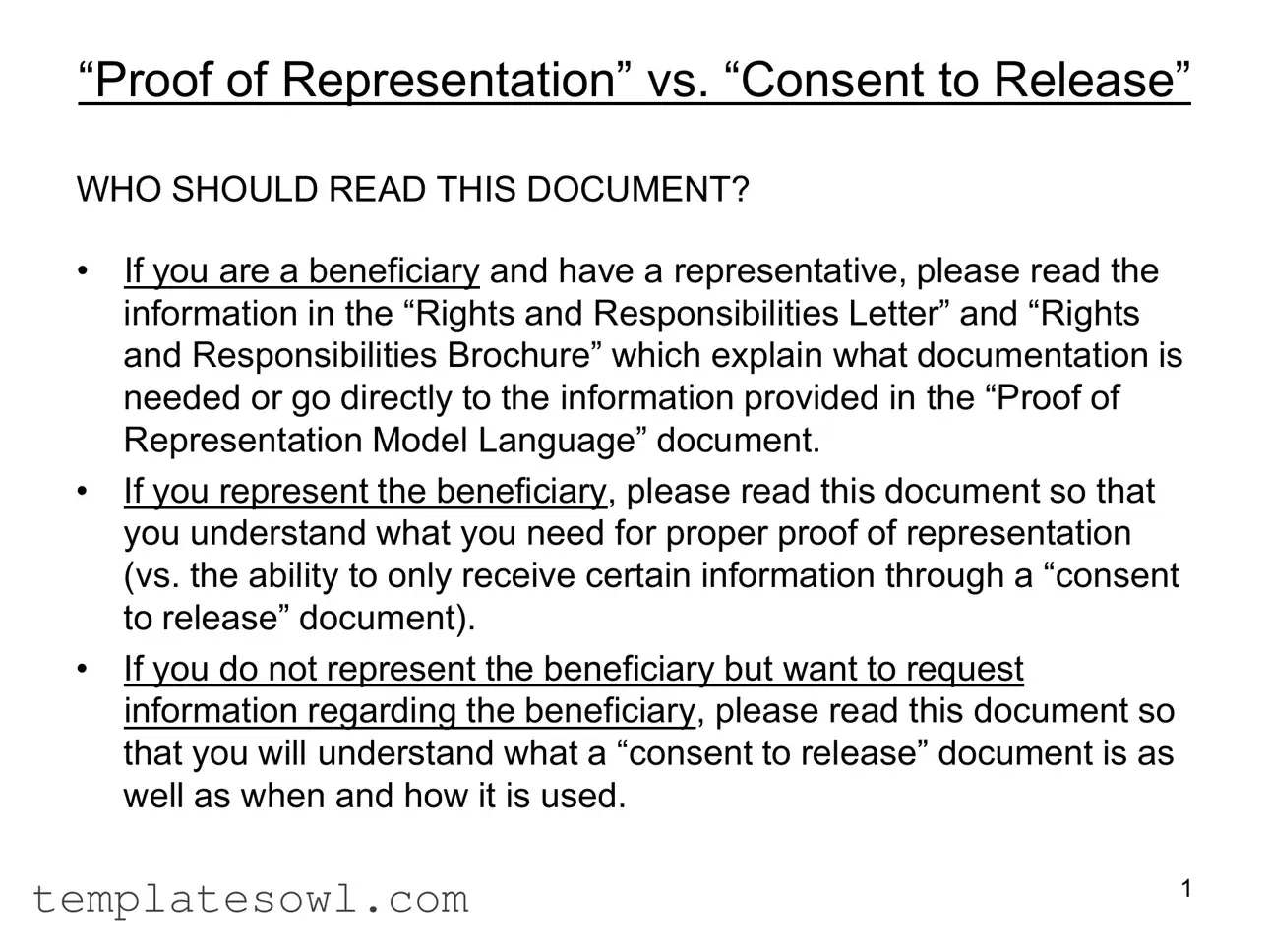What is the Proof Of Representation form?
The Proof Of Representation form is a document that allows a beneficiary to authorize an individual or entity, such as an attorney, to act on their behalf in matters related to Medicare. This includes responding to requests from the Medicare Secondary Payer Recovery Contractor (MSPRC) and handling recovery claims.
Who should use the Proof Of Representation form?
This form should be used by beneficiaries who have a representative, as well as by the representatives themselves. If someone wants to request information about a beneficiary but does not represent them, they should understand the difference between this form and a Consent to Release document.
How does Proof of Representation differ from Consent to Release?
Proof of Representation allows a representative to act on behalf of the beneficiary, facilitating a two-way exchange of information. In contrast, Consent to Release permits an individual to receive limited information from the MSPRC without the authority to make decisions for the beneficiary. This exchange of information is only one-way.
Why is proper documentation necessary?
According to the Privacy Act, Medicare cannot disclose a beneficiary’s information without appropriate authorization. Proper documentation, such as the Proof Of Representation form, ensures that information is shared securely and legally.
When should a beneficiary use the Proof Of Representation form?
A beneficiary should use this form when they want to designate a representative to handle specific matters with Medicare, particularly in cases involving liability insurance, workers’ compensation, or no-fault situations.
What information does the Proof Of Representation form allow a representative to access?
The form gives representatives access to necessary information related to the beneficiary’s Medicare claims, enables responses to inquiries from the MSPRC, and allows for filing appeal requests when needed.
Can a representative make decisions on behalf of the beneficiary using this form?
Yes, a properly completed Proof Of Representation form grants representatives the authority to make decisions and actions on behalf of the beneficiary, helping to resolve issues with Medicare.
Is there a time limit on a Proof Of Representation form?
The form does not typically have a strict expiration date, but if the beneficiary wishes to revoke the authorization or change representatives, they must submit a new form effectively terminating the previous authorization.
What should a beneficiary do if they have concerns regarding their representative?
If concerns arise, beneficiaries should review the responsibilities outlined in the "Rights and Responsibilities Letter" and consider changing representatives if necessary. Communication and transparency with representatives are also important.
Where can I find additional resources regarding the Proof Of Representation form?
Beneficiaries and representatives can find more information in the “Rights and Responsibilities Brochure” and the “Proof of Representation Model Language” document, which provide guidance on the necessary documentation and responsibilities.

